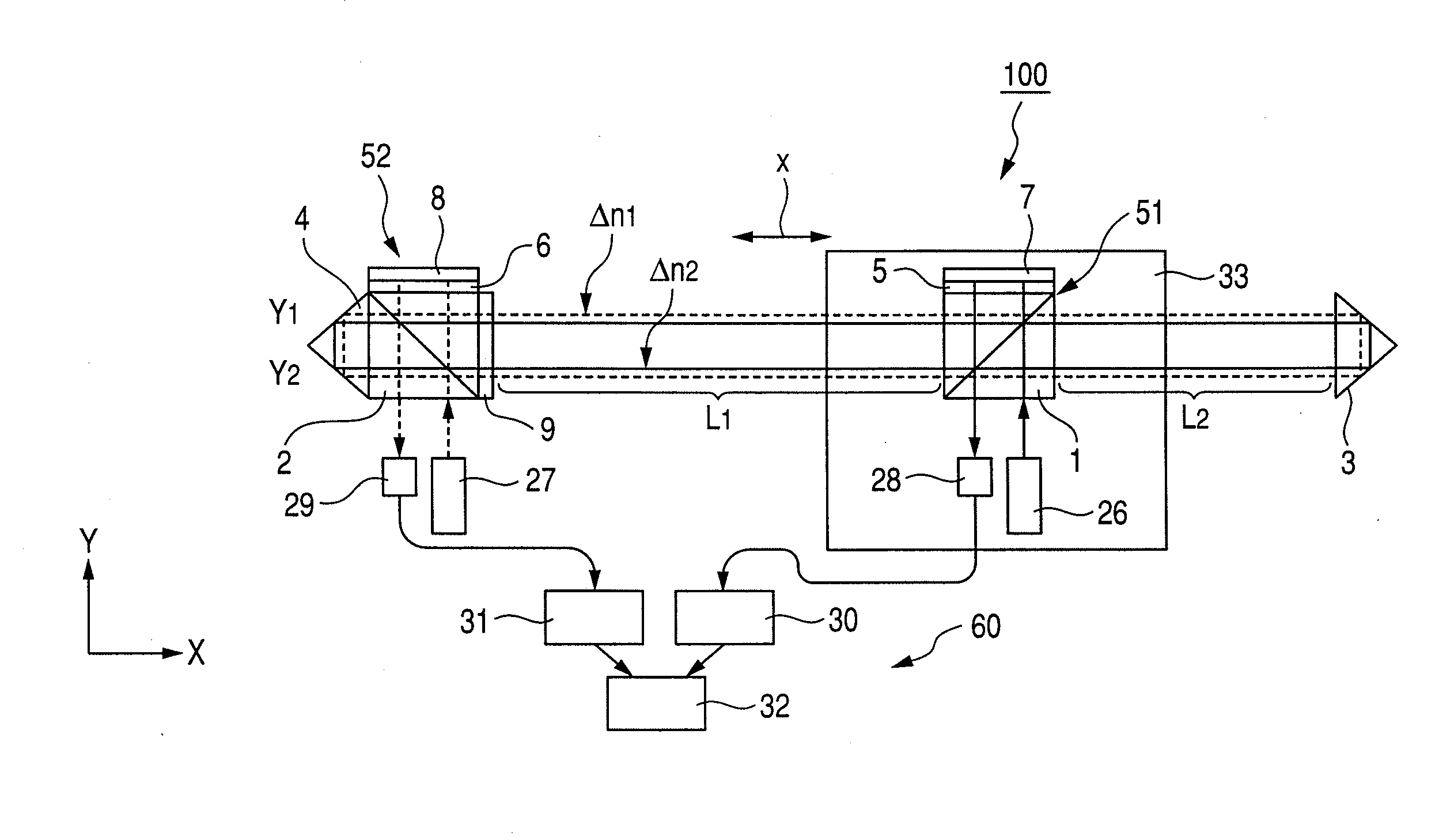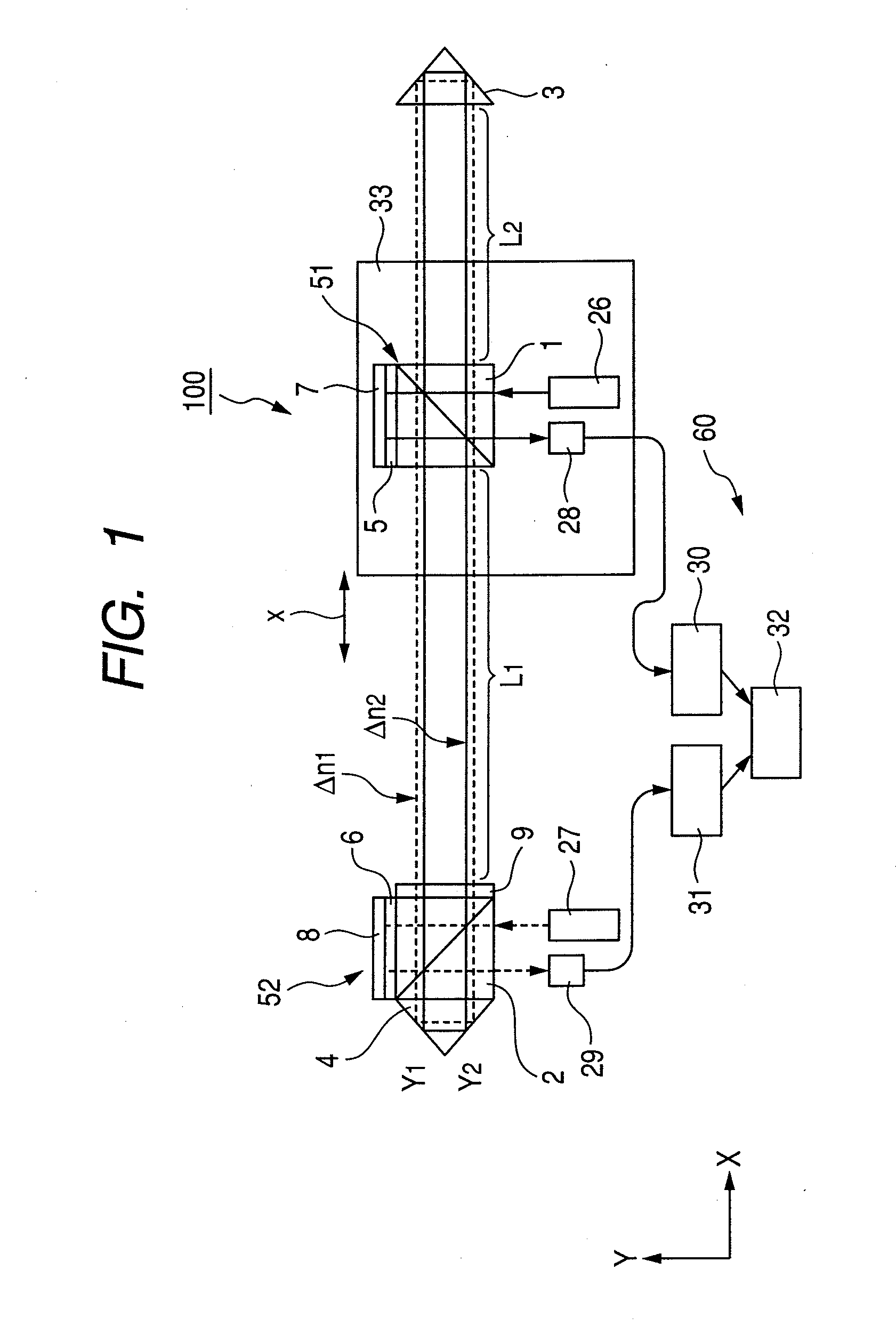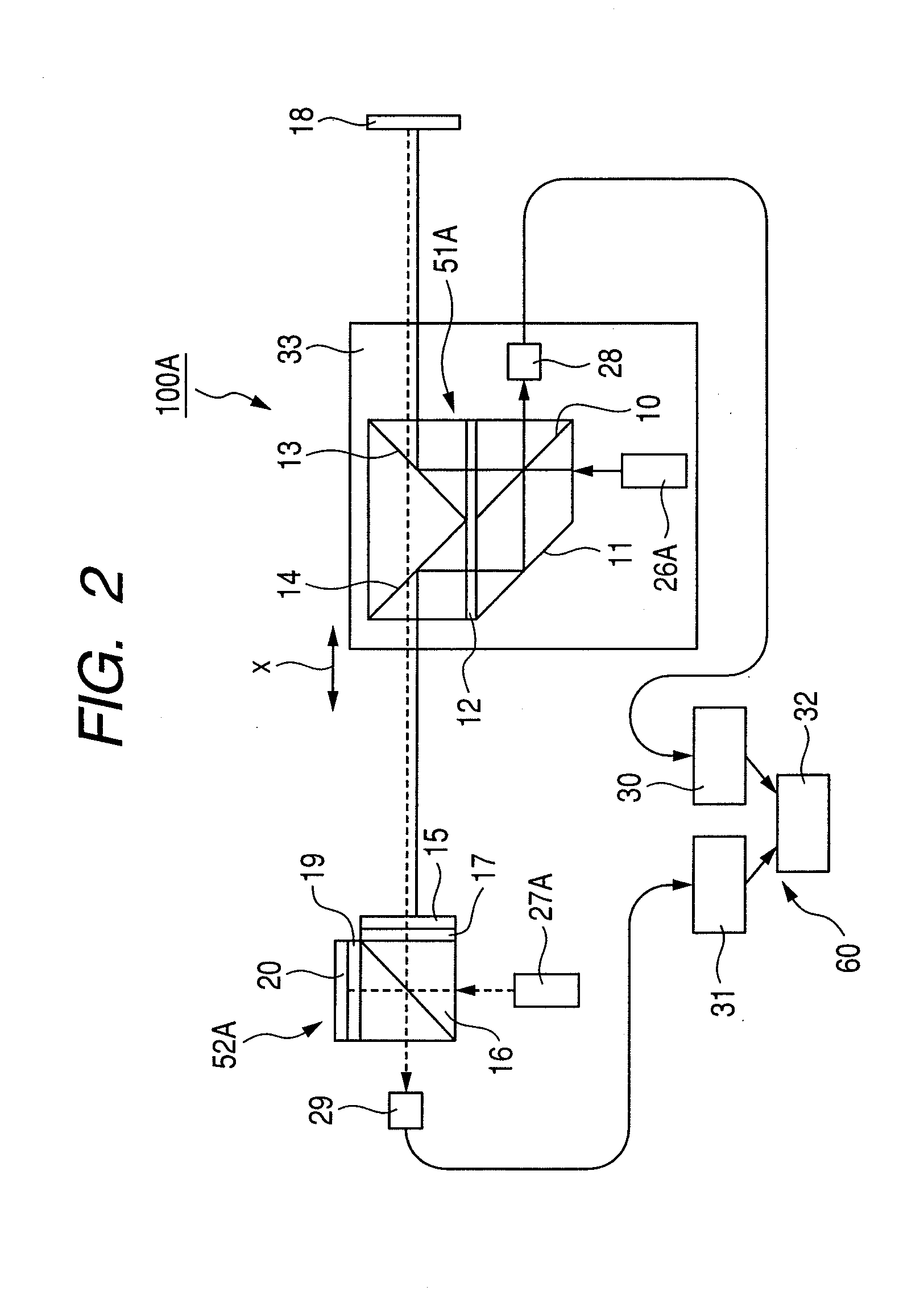Laser gauge interferometer
a technology of interferometer and laser gauge, which is applied in the direction of instruments, measurement devices, scientific instruments, etc., can solve the problems of large measurement error, error in the measurement result of large measurement error obtained by correcting the displacement of the moving member, etc., to achieve the effect of improving measurement accuracy
- Summary
- Abstract
- Description
- Claims
- Application Information
AI Technical Summary
Benefits of technology
Problems solved by technology
Method used
Image
Examples
first embodiment
[0021]As illustrated in FIG. 1, a laser gauge interferometer 100 includes a pair of corner cubes 3 and 4 serving as a pair of reflection units for reflecting laser beams. The pair of corner cubes 3 and 4 are fixed to a base member (not shown) and maintained at a predetermined distance. In FIG. 1, a moving member 33 is, for example, a movable stage (X-stage) and linearly moved between the pair of corner cubes 3 and 4 in a direction indicated by an arrow “x”. The laser gauge interferometer 100 measures an amount of displacement of the moving member 33 which is moved, based on interference of laser beams. Note that, although a case where the reflection units are the corner cubes 3 and 4 is described, the reflection units may be rectangular mirrors.
[0022]The laser gauge interferometer 100 further includes a measurement laser oscillator (laser oscillator for measurement) 26 serving as a measurement laser light source, a correction laser oscillator (laser oscillator for correction) 27 ser...
second embodiment
[0048]Next, referring to FIG. 2, a laser gauge interferometer 100A according to a second embodiment is described. In the second embodiment, the same structures as in the first embodiment are denoted by the same reference symbols and the description thereof is omitted. The laser gauge interferometer 100A includes a plane mirror serving as one of a pair of reflection units and a dichroic mirror 15 serving as the other of the pair of reflection units. The pair of mirrors 15 and 18 are fixed to a base member (not shown) and maintained at a predetermined distance. The moving member 33 is linearly moved between the pair of mirrors 15 and 18 in the direction indicated by the arrow “x”. The laser gauge interferometer 100A measures the amount of displacement of the moving member 33 during moving, based on the interference of laser beams. The laser gauge interferometer 100A further includes a measurement laser oscillator 26A, a measurement interferometer 51A, a correction laser oscillator 27A...
third embodiment
[0065]Next, referring to FIG. 3, a laser gauge interferometer 100B according to a third embodiment is described. In the third embodiment, the same structures as in the first and second embodiments are denoted by the same reference symbols and the description thereof is omitted. In FIG. 3, a measurement laser beam is indicated by a solid line and a correction laser beam is indicated by a broken line. In FIG. 3, the optical paths in air of the measurement laser beam and the correction laser beam are actually overlapped with each other, but slightly shifted from each other for the sake of convenience. The third embodiment is different from the second embodiment in terms of a pair of reflection units. That is, one of the reflection units is a corner cube 22 and the other of the reflection units is a pair of dichroic mirrors 23 and 24 each having an incident angle of 45°. Therefore, the correction interferometer 52B further includes a corner cube 21 provided adjacent to a surface of the ...
PUM
 Login to View More
Login to View More Abstract
Description
Claims
Application Information
 Login to View More
Login to View More - R&D
- Intellectual Property
- Life Sciences
- Materials
- Tech Scout
- Unparalleled Data Quality
- Higher Quality Content
- 60% Fewer Hallucinations
Browse by: Latest US Patents, China's latest patents, Technical Efficacy Thesaurus, Application Domain, Technology Topic, Popular Technical Reports.
© 2025 PatSnap. All rights reserved.Legal|Privacy policy|Modern Slavery Act Transparency Statement|Sitemap|About US| Contact US: help@patsnap.com



